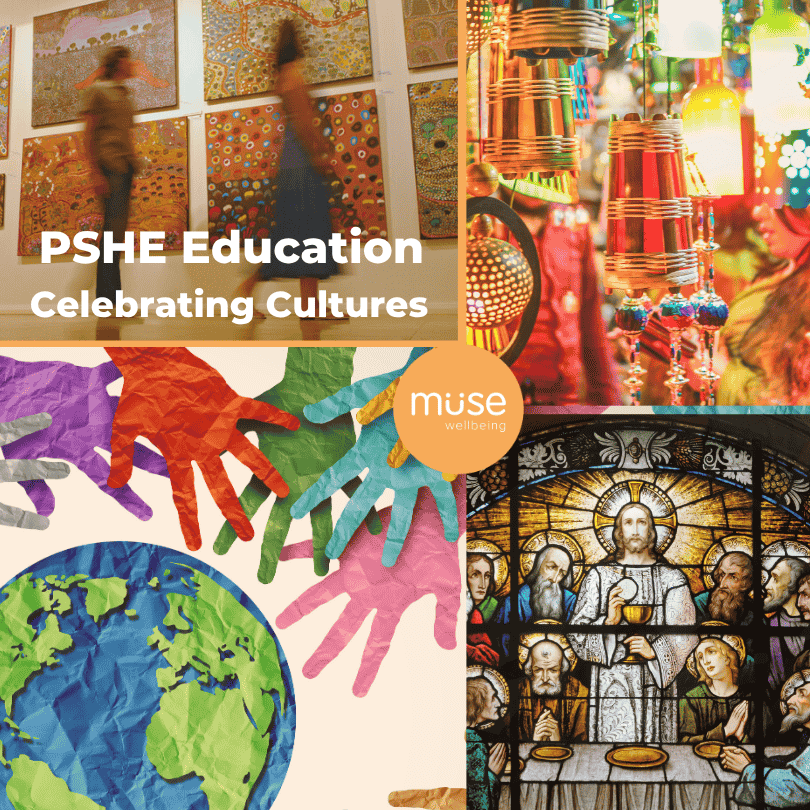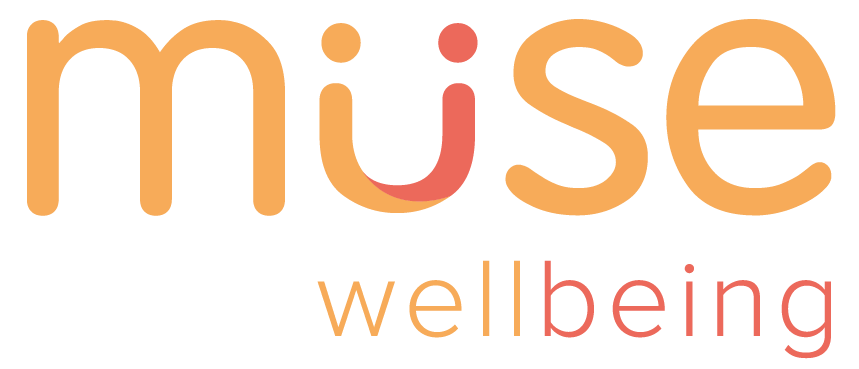Teaching Culture and Diversity in Schools
Aug 5
/
Muse Wellbeing

Author: David
David is the Muse Wellbeing director and lead curriculum developer. His Main passions include education, surfing and travelling.
David is the Muse Wellbeing director and lead curriculum developer. His Main passions include education, surfing and travelling.

Edited/Reviewed: George
George is an international school teacher based in Asia. A passionate language learner and polyglot, he thrives in diverse classrooms.
George is an international school teacher based in Asia. A passionate language learner and polyglot, he thrives in diverse classrooms.
Culture and diversity shape children’s views of themselves, their peers and the world around them. Teaching these themes in schools not only fosters inclusion and acceptance, but also prepares students to thrive in a globalised society. When embedded meaningfully across the school curriculum, teaching these themes helps to mold students into kind, tolerant, open-minded and confident learners.
Why Teaching Culture and Diversity Matters
Incorporating culture and diversity into the school curriculum is essential for developing empathy, understanding of others and responsible citizenship. In classrooms across the UK today, pupils come from a wide range of ethnic, cultural and religious backgrounds. All children benefit from learning about others in an inclusive, understanding environment. Teaching about a range of global cultures helps explore their own and others’ identities and values, while teaching about diversity builds respect for differences between peoples
The Department for Education (DfE) continues to highlight the teaching of respect and inclusion as part of pupils’ spiritual, moral, social and cultural (SMSC) development, particularly through a statutory expectation for all schools in England (DfE, 2014). This government directive encourages schools to engage children with different cultures, beliefs and communities, helping to equip them with an understanding and the tools for navigating life in modern Britain.
The Department for Education (DfE) continues to highlight the teaching of respect and inclusion as part of pupils’ spiritual, moral, social and cultural (SMSC) development, particularly through a statutory expectation for all schools in England (DfE, 2014). This government directive encourages schools to engage children with different cultures, beliefs and communities, helping to equip them with an understanding and the tools for navigating life in modern Britain.

Celebrating diversity in the classroom raises students’ social skills, builds greater respect for others and deepens a sense of belonging for all. These outcomes form the cornerstone of inclusive school environments, leading to all students feeling valued, confident and connected to their classmates and the wider community.
Why Culture and Diversity Matter More Than Ever
In our modern, fast-changing, globalised world, a deep awareness of culture and diversity is no longer something that’s simply “nice to have”. By extension, teaching these in schools is also essential. Globalisation, social media and rapid shifts in society, technology and more mean that children are growing up in a world filled with abundant differences and complexity. Educators must be equipped with the right know-how and tools to guide them through this with curiosity, kindness and clarity.
- Fear of “Getting it Wrong”
It’s not uncommon for teachers to feel nervous when covering topics around race, culture or identity. The wrong word said, the potential for causing offence, facing pushback from parents or the wider school community - these fears can often be faced by school staff delivering learning content. This uncertainty may lead to lessons that only focus on the surface-level of the topic, missing the opportunity for real learning.
- Addressing Online Influences and Social Media
Even at a primary school age, young children are increasingly exposed to social media, be it through older siblings, YouTube or family devices. These platforms and the content they disseminate can reinforce (or even introduce children to) stereotypes, spread misinformation and promote divisive views. These online influences can shape pupils’ understanding of difference and diversity, and schools are often left to unpick harmful narratives in the classroom. A 2023 Ofcom report found that over 60% of 8–11-year-olds frequently access video sharing platforms, underscoring the necessity of addressing potentially harmful online influences through PSHE lessons and the importance of teaching diversity.
- Limited Teaching Time, Resources and Training
With extracurricular student support, curriculum pressures and other increasing demands on teaching staff, schools may struggle to find the time, training or resources to teach topics like culture and diversity to a suitable degree. Teachers may feel confident teaching their primary subjects, be it maths, science or English, but when it comes to lessons or questions such as identity, racism or heritage, those same teachers begin feeling less confident.
Supporting Staff with Confidence and Training
Teachers need confidence, clarity and high quality support in order to teach culture and diversity effectively. At the moment, teachers are often given isolated training days, when they should instead be offered ongoing opportunities to reflect, explore inclusive teaching practices and share their ideas with colleagues. Professional development opportunities should equip teachers with the methods for discussing sensitive topics in ways suitable for students at each key stage, handle complex or out-of-one’s-depth questions with careful consideration and model inclusive behaviour and language.
It’s crucial to develop a whole-school culture that values openness, curiosity and continuous learning. A thoughtful, inclusive, resonant and empowering lesson will come easier when staff feel safe and open to discuss these themes and ideas with others.
Stakeholders, which includes the school leadership, SENCOs, DSLs and non-teaching staff in particular, should regularly review the curriculum so that they are suitably proficient with the themes, topics and levels of depth it details and ensure it reflects diverse cultures and experiences. Efforts must be made to actively embed the principles of inclusion across all subjects the school offers, be flexible and ready to adapt to changes and respond to the evolving needs of the school community.
Practical Ideas for Teachers and Schools
Not to be overlooked, practical, everyday approaches are key to embedding culture and diversity in the school environment. Small changes can provoke thought and discussion, even if it’s just the inclusion of a book on a shelf or the way teachers express themselves, to the discussions they hold.
Representation in the Classroom
All children should see themselves reflected in the materials used in the classroom. Books, displays, videos, worksheets and so on should provide examples that reflect a broad range of ethnicities, family structures, languages and cultures. These types of representation should feel unforced and natural throughout the school as part of daily life. They shouldn’t be limited to themed weeks or posters in the corridors. For younger children, storybooks seamlessly showcasing diverse people and experiences are a powerful way for students to see diversity as part of daily life.
Encouraging Open and Respectful Discussion
Teachers should take time in class for allowing children to be inquisitive, share their own experiences and explore differences through conversation and discussion. Circle time, discussion in PSHE and classroom debates can all help students to explore the themes of fairness, identity and respect. Ensuring that students embody kindness and active listening through setting ground rules will help students to engage thoughtfully and respectfully. Teachers should model inclusive and respectful language, as well as challenge stereotypes or biases as they arise.
How Muse Wellbeing Can Help
At Muse Wellbeing, we provide a full, age-appropriate curriculum designed to help schools embed culture, inclusion and respect across the primary years. Our PSHE and wellbeing lessons are designed to support children in exploring identity, diversity, belonging and respectful relationships in meaningful, engaging and relevant ways.
Our curriculum for each year group includes lessons that reflect the realities of modern British life, while staying rooted in the DfE’s guidance for PSHE, British Values and SMSC development. Whether you're looking to expand your approach to diversity or ensure your curriculum meets the latest standards, Muse Wellbeing provides accessible resources, reflective activities and clear support for teachers.
Muse Wellbeing
Subscribe for RSHE & Wellbeing Updates & Learning Resources
Receive essential information on RSHE and wellbeing for your school and community
Thank you!

Copyright © 2025 Muse | All Rights Reserved.
Would you like to logout of Muse Wellbeing?


